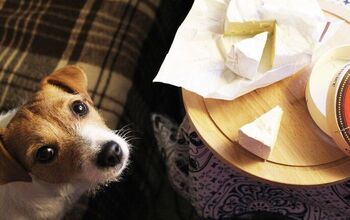How to Keep Your Pets Safe While Moving

While moving is a hassle at the best of times, for your pets it can be a traumatic upheaval that leaves them feeling disconnected from their home base and familiar sights sounds, and smells. So, how do you keep them stress-free and more importantly, safe, when strangers are coming and going and boxes are being loaded into vans? Here are a few easy tips:
- The ‘Hood
Let’s take a giant step back to when you’re first house-hunting. Look for homes that have fenced yards (or easy-to-fence yards), that don’t front onto busy streets (pets can scoot out unexpectedly), and direct access to the backyard can be a huge bonus. Maybe ceramic tiles in the kitchen if you’re living with a puppy, and lots of easy to access windows for our feline friends. Little details can make keeping your pet happy and safe, a lot easier.
- The Move
Crates are easiest for providing a safe, secure environment for your pet. If he already has one, get him used to staying in it when you’re around and he’s typically used to being able to roam around. If he doesn’t have one, borrow or purchase one and toss in some of his favorite toys, a blanket, and a clothing item with your scent for a little added comfort. For cats, I find that simply leaving the crate out a week in advance (padded with a cozy blanket or towel) will become a natural snug they’ll start using long before the big day.
- Boarding
If you’re move is expected to take a few days, consider boarding your pet. If the thought of leaving them in a kennel rubs you the wrong way (me too), look at something a little more upscale. Many doggie spas include one-on-one walks, memory foam beds for older pets, playtimes with other pets, and fun, outdoor spaces where they can run leash-free. Think of it as sending your pet off to the spa, so you can pack boxes and carry furniture with a clear conscience.
- Location, Location, Location
Relegate your pet (crated or not) to one room in your old home, so they are safely away from the noise and chaos taking place. As above, add some of their creature comforts including food, water, litter, and be sure to check on them from time to time to reassure them that you’re still there and are happy to see them (note – treats help). Ideally, this should be a room that has not yet been packed, so they can relax in a setting that’s familiar to them.
- Walkies
Because Rover is going to be confined for several hours, plan to take him out for a long, tiring walk in advance of the arrival of movers. This not only allows him to relieve himself, but burn off a little energy and have some one-on-one time with you. It can help alleviate separation anxiety during his period of isolation, and prevent destructive behaviors such as barking, chewing, or urinating. And never withhold food or water during the move. Regardless of your concern about accidents, your pet needs hydration.
- Relocation
Time to move your pet from his old home to his new home, and you expect to be preoccupied with cleaning, unpacking, and furniture set-up. Pooches can do some dangerous exploring on their own – including bolting out the door as movers come and go, or finding that tiny hole in the fence just large enough to squeeze through. As with your old home, find a room that can become his dedicated space for the day. Visit frequently, stock it with his favorite stuff, and don’t release him until the movers have left, the door is secured, and you can patrol your new home together.

Sharing space with three seriously judgy Schnoodles and a feline who prefers to be left alone. #LivingMyBestLife
More by Mary Simpson























